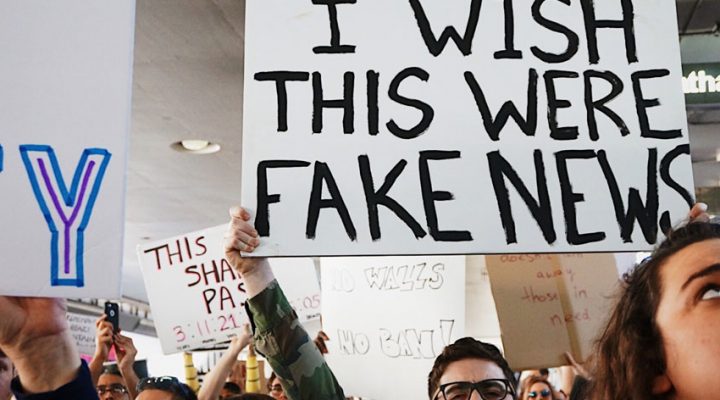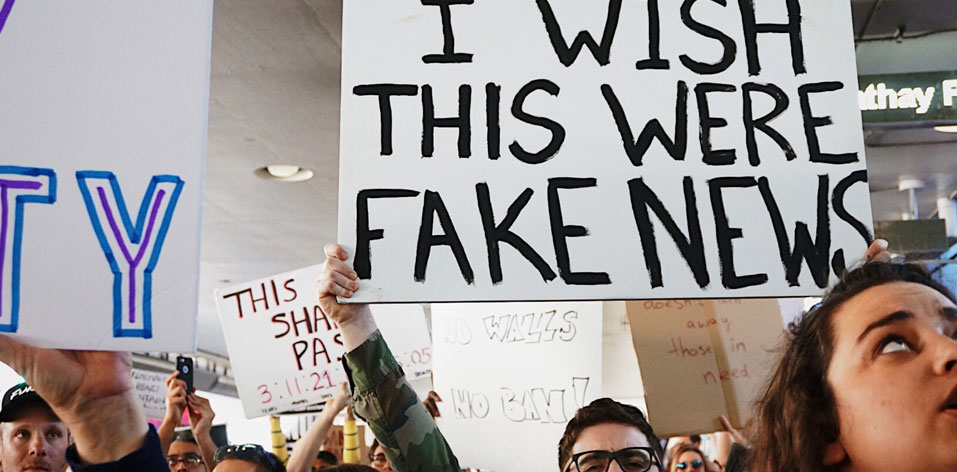These 40 days of Lent are designed to be opportunities for sober reflection and acts of confession, both individual and corporate. This period of introspection leads to the high point of Holy Week, the commemoration of the crucifixion of Jesus on Maundy Thursday and resurrection of Jesus on Easter Sunday.
My Southern Baptist evangelical upbringing largely ignored the liturgical calendar followed by Christians worldwide, reducing the seasons of reflection during Advent and Lent to singular celebrations of Christmas and Easter. Admonishments to repent were ever-present during the repetitive “invitation” hymns following the sermon, but they typically addressed individual sins of direct commission.

Robert P. Jones (Photo by Noah Willman)
Daily Bible readings and prayer times provided other moments for confession, but these too typically consisted of inventories of sinful attitudes and interpersonal transgressions. In my experience growing up in this world, these contemplations and confessions were sincere, but they rarely extended beyond my circle of romantic interests, family, and close friends.
But Lent has come to have significance for me as an adult. I’ve found the 40 consecutive days of Lent, even if I’m not practicing daily, provide the space to evaluate not only the extended ripple effects of my own actions but the network of relationships, traditions, worldviews and practices that caught and enveloped me as I entered an already spinning world.
I didn’t create these complex, imperfect patterns and institutions, but as I came of age, I understood I was increasingly responsible for how they shaped me and how I shaped them. As I turn 55 this year, I’m thinking more about my responsibility for what gets excised and what gets passed down to my kids and subsequent generations.
A pure conception of the faith
One of the biggest obstacles to thinking about institutional reform, particularly in the religious context, is the temptation to project and protect some pure conception of the faith (especially if one thinks of religion mostly in terms of beliefs), which exists separately from the often misguided or even malevolent actions of its followers.
For example, since the publication of White Too Long, when I talk in predominantly white churches about the entanglement of Christianity and white supremacy, I often hear declarations such as the following:
- The genocide and exile of indigenous peoples from their lands are at odds with the teachings of Jesus.
- Slavery is a clear violation of biblical principles.
- Segregation and the denial of civil rights to people of color conflict with church doctrine.
- White supremacy is antithetical to the gospel.
- No Christian could support the denial of the equality of all people.
Most white Christians today accept these declarations as truisms.
There is just one problem: The clear historical record testifies that many — and until very recently, most — Christians of European descent disagreed with at least some if not all these sentiments. For centuries, the white Christian faithful in the Americas saw no conflict between the killing and exile of Native Americans and the teachings of Jesus, slavery and biblical mandates, segregation and church doctrine, or white supremacy and the demands of the gospel.
Faced with insurmountable and incontrovertible counterexamples, contemporary white Christians often fall back on revisions of these strong claims, strategically deploying adjectives like “true” or “real” or “authentic.” The declarations are thus transformed:
- The genocide and exile of indigenous peoples from their lands are at odds with the REAL teachings of Jesus.
- Slavery is a clear violation of AUTHENTIC biblical principles.
- No TRUE Christian could support the denial of the equality of all people.
The purpose of such revisions, even if performed subconsciously, is to accomplish a deception. They feign a chastened retreat by seeming to acknowledge the counterexamples that falsify the original bold claim. But by redefining the terms, they surreptitiously shift the ground to protect Christianity itself from culpability.
‘No true Scotsman’
This rhetorical sleight of hand, so common in white Christian circles today, was memorably dubbed the “no true Scotsman fallacy” by British philosopher Antony Flew in his 1971 book Thinking about Thinking. He sets up the problem as follows:
Imagine some Scottish chauvinist settled down one Sunday morning with his customary copy of The News of the World. He reads the story under the headline, “Sidcup Sex Maniac Strikes Again.” Our reader is, as he confidently expected, agreeable shocked: “No Scot would do such a thing!” Yet the very next Sunday he finds in that same favorite source a report of the even more scandalous ongoings of Mr. Angus MacSporren in Aberdeen. This clearly constitutes a counterexample, which definitely falsifies the universal proposition originally put forward. …. Allowing that this is indeed such a counterexample, he ought withdraw; retreating perhaps to a rather weaker claim about most or some. But even an imaginary Scot is, like the rest of us, human; and we none of us always do what we ought to do. So what he in fact says is: “No true Scotsman would do such a thing!”
Flew goes on to explain that “the no true Scotsman move” consists of responding to a falsifying counterexample of a declaration by “so reinterpreting the words in which it was originally formulated that these now become the expression of an arbitrarily made-to-measure necessary truth.” To be a true Scot, one must be not only a Scot but a Scot who is not a sexual predator.
‘No true Christian’
When this move is employed in white Christian circles in the context above, we get a similarly deceptive and arbitrary made-to-measure necessary truth: To be a true Christian, one must not only be a Christian but a Christian who is not racist.
Such a declaration is seductive for white Christians for the same reason it is for the chauvinistic Scotsman. It invents a comforting assertion about a group that must, by definition, be admirable and good. It conjures an undefiled concept beyond this world and then proceeds to treat it as a fact about the universe in which we actually live.
“By withdrawing your attention from flesh and blood Scots, to talk of true Scotsman, you show that your concern is now with what you would like, rather than with how in truth things are.”
Again, Flew: “And it is, as I have been urging, the mark and test of our sincere concern for truth that we should be in this way open to and ready to accept the falsification of our claims about how in the universe around us things are. By withdrawing your attention from flesh and blood Scots, to talk of true Scotsman, you show that your concern is now with what you would like, rather than with how in truth things are.”
For Christians (at least those who affirm that no Christian should knowingly avoid the truth), such a maneuver should be problematic first and foremost because it is dishonest. The “no true Christian move” is a stumbling block to seeing reality for what it is, which in turn undermines the possibility of authentic confession and reform.
Its deployment shows our motivations are to protect some imaginary, pure version of Christianity — one untarnished by the actual historical behavior of flesh and blood Christians and one untethered from the institutions they created and into which we have come to live.
This self-deception is not just a theological or psychological problem. It limits our ability to live faithfully in the world and positions us — even unwittingly — to perpetuate harm.
Dishonest history
Half a century ago, Vine Deloria Jr. (Lakota, Standing Rock Sioux) — scholar, activist and former executive director of the National Congress of American Indians — penned “An Open Letter to the Heads of the Christian Churches in America,” calling on Christian clergy and denominational leaders to begin “an honest inquiry by yourselves into the nature of your situation.”
The heart of Deloria’s indictment was that white Christians had fabricated a dishonest history that denied the impact of the European Christian worldview on indigenous people, and by doing so, continued to harm them. Deloria’s missive was piercing:
“We all come to the necessity of facing ourselves for what we are.”
No effort has been made by Christians to undo the wrongs that were done, albeit mistakenly, and which are perpetuated because Christians refuse to measure their own understanding of the world by the facts of the world in which we all live. … (and) honestly appraise the present situation in its true historical light.
The American experience would not then appear inevitable. The novelty of the establishment of a democracy would be understood in its own light. The mythology of American history would be seen as mere mythology. The Custers, Chivingtons and Calleys would be seen for what they were. We could all come to the necessity of facing ourselves for what we are. We would no longer have a God busily endorsing and applauding the things that we are doing. We would have to be on God’s side in our dealings with other peoples instead of being so sure that God is automatically on our side.
Deloria’s indictment captures the heart of Lent — that we all come to the necessity of facing ourselves for what we are.
Particularly for white Christians, Lent provides the opportunity to move beyond assertions of Christianity as we wish it were and to face Christianity as it has been lived. If we can’t muster this courage, we are condemned to continue our self-delusions. And we will, undoubtedly, continue to harm others with actions flowing from the falsehoods we continue to cultivate.
This working out of our salvation is difficult, harrowing work. But for we white Christians, it is also the path to maturity and liberation. If we truly want to see and show others a more admirable Christianity, we have to do more than point to some abstract concept. We have to live it into reality.
Robert P. Jones is CEO and founder of PRRI and the author of White Too Long: The Legacy of White Supremacy in American Christianity, which won a 2021 American Book Award.
This column originally appeared on Robert P. Jones’s substack #WhiteTooLong.
Related articles:
During Lent, I’m learning to walk with a limp | Opinion by Chris Conley
Going public with Lent’s call to penitence | Opinion by Ken Sehested


